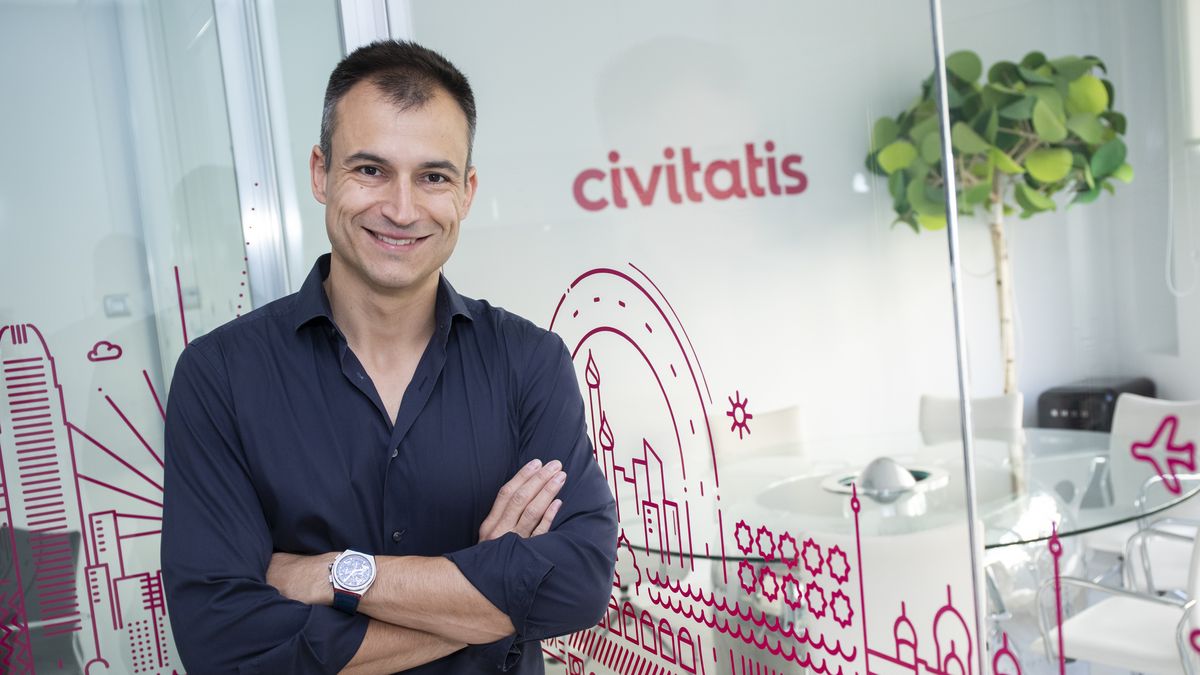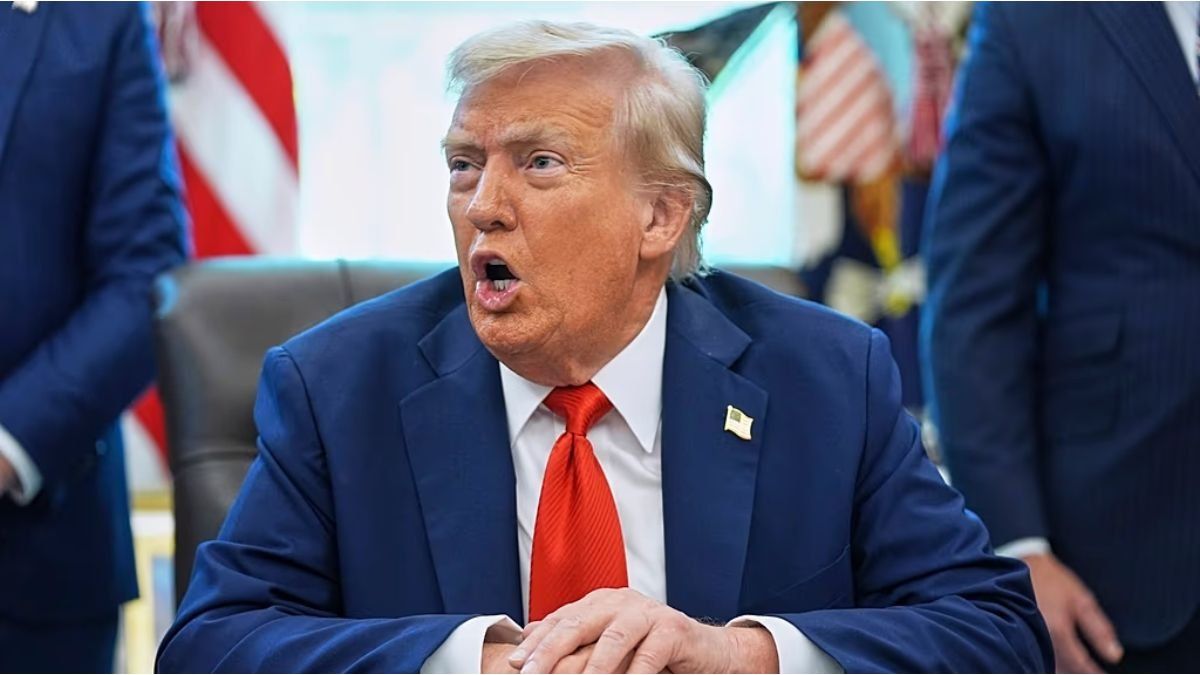“We are meeting the objectives of strengthening our presence in Argentina and Latin America,” explained Gutiérrez in an interview with Scope during a recent visit to Buenos Aires.
Journalist: How did you come to create the platform? What was the business plan?
Alberto Gutierrez: The truth is that there was no initial business idea. My original intention was to barely earn 200 euros a month to pay for a low-cost flight and a hotel in a European city. The need I saw was mine to travel. I went to Rome for the first time, I saw the Colosseum and I was amazed. I said I want to travel more. And that’s how my business plan was put together.
Then the project evolved. I started writing travel guides on the internet. Enjoyvencia.com was the first. Then I did the same with Prague. I positioned myself on Google and saw how to make that traffic profitable, whether through Booking, with Google advertising, with links to flights, rental cars, whatever.
Q: And how did it occur to you to add guided excursions?
AG: That came when a guide from Prague told me he wanted to put a banner on my site. And I proposed to him that instead of paying me 30 euros a month, I preferred to partner with him and sell his services on commission. That’s how I developed the sales platform and saw that it worked. And from that moment, which was in April 2009, there was an organic development, searching for suppliers, writing guides to new destinations. In the first years I made about 50 guides, I went to each city one week a month. So six years passed where I was working alone. I was in charge of writing, designing, programming, getting content, serving clients, I did everything myself. In September 2014 I opened the first office. I did it when my 24 hours a day were no longer enough for me.
Q: Is the company still focused on its original business of guided tours?
AG: Yeah. We are an excursion platform, which is a very broad concept that includes everything except flights and hotels. We can provide an airport transfer, a helicopter ride, a SIM card, travel insurance. The idea is to associate our brand with entertainment options and things to do in a city.
The focus is on excursions in Spanish around the world. In some places it is easy to have that service, but if you go to Japan or Zambia it is difficult to find guides. In Zambia I met a person from there at Victoria Falls who spoke Spanish but was not a guide. I told him to become a guide. And now he is our guide in Livingstone where no one else speaks Spanish.
We also translated our website into French, Italian, Portuguese and English, and searched for products in those languages. In English it is easy to find, but not in Portuguese, for example. We will have to work so that this language has a market as wide as Spanish. But when I started there was no Spanish either. There were no tours in Miami in Spanish. Neither in Brussels, nor in Amsterdam. And all of this has been generated throughout these years.
Q: What was the growth process like?
AG: I couldn’t specify when we surpassed the first 100,000 users. But I remember perfectly that in 2014, which was my last year of working alone, I sold about 7 million euros. Those first six years were the greatest enjoyment for me. I decided everything and it only depended on me. If the business was going well it was up to me, but if it was going badly it was also my fault.
I opened the first office, started hiring two employees, then two more and that’s how we didn’t stop. Now in the last month we hired 20 or 30 more people. Suddenly this has gone crazy. Now we are almost 400.
Q:How are these employees distributed?
AG: One of the most important parts is customer service. We have it mostly in Spain. In total we have 80 people in that area, in physical offices. In Peru, we have 20 people.
Another large team is Supplywhich is in charge of searching for new products, suppliers, and negotiating commissions. There are 40 other people here.
The technology team has about 80 people. This sector grew a lot. We double it from one year to the next.
And now after making more hires we see that 2025 is going to be a year of gaining efficiency. More than hiring, it will be a year of establishing all the people we have hired, all the tools, and putting them to work. Because at some point you feel like a headless chicken. That’s why you have to focus and focus.
Q: Who are your current partners in the company?
AG: The company is still mine, but Vitruvian, the English fund, joined in April 2022, and now they now have a little more of the majority. I let them in to professionalize the company, because it grew a lot. Before it was my beach bar, but I think it was better for the company and the employees to take a step forward. With the income from the fund, a steering committee was formed.
Q: How did you cope with the pandemic?
AG: We survived it with our own means; Luckily he caught us with quite a bit of cash in hand. And in fact I kept more than 100 employees for a year and a half without sales. The competition closed, but we maintained normality as much as possible to look for new suppliers, negotiate agreements. It was expensive to survive but we did it. If we survive the pandemic without sales we can survive everything.
Q: Was there an explosion of demand in the tourism sector after the pandemic?
AG: It was said that people went desperate to travel but it was not like that, although we came out reinforced by the brand image. In Spain, for example, we were more afraid than in other countries. When people started to be able to go out, I took a trip to Italy and it was full of French people and people from other countries, as if nothing had happened. But there were no Spaniards. That is why in Spain the recovery was slower.
Being a global market, there is important exposure in Argentina, Mexico, Brazil. But each country emerged from the pandemic at its own pace. That is why it cannot be said that there was an explosion in tourism when the restrictions fell. For us, 2021 was average, 2022 was already good, 2023 was also good, and this year 2024 I think the business started to slow down a little. It was seen in Spain, in places like the Balearic Islands, where there was not a good summer for the hotel industry. We believe that in 2025 the tourism sector will tend to stabilize.
Q: Is this slowdown greatly felt in Argentina?
AG: Argentina’s economic context is not good, but my impression is that this year it is more stable than before. And so far this year we have grown a lot. There is a more stable exchange rate, which now makes it cheaper to travel abroad but more expensive to travel within the country. For whatever reason, I can say that at the beginning of the year, from January and February to September, we have tripled the number of trips per month. In September we exceeded 60,000 travelers in the month. And in all of 2024 there will be more than 600,000 who travel with us. It’s been a very good year. And it is improving month by month.
Q: What are the projections for the Argentine market?
AG: In Argentina we aim to double the number of Argentine travelers abroad. This year there will be 600,000 and we want there to be 1.2 million in 2025. The way the growth is going month by month, it is an achievable figure. I’m not saying easy, but we can achieve it. Our sales channel is organic, word of mouth, people who booked before and do it again, which is how we have traditionally grown. We add travel agencies. There are already 1,600 in the country who have joined our platform. And online marketing. But word of mouth is what has sustained us since the beginning.
Q: Where do Argentines travel the most?
AG: The Argentine is now traveling abroad more, but it is almost because of a currency problem. In addition, people book more excursions when traveling outside their country. Within the country this custom is less. When you are outside your country you leave with more desire to spend and do different things. More is spent on trips abroad. Although 90 percent of trips are within the country, the big money moves in the international market.
Q: Did you add more options within the country?
AG: The product offering that we have today in Argentina is aimed mainly at tourists who arrive from other countries. Especially from Brazil. If we manage to include more guide products in Portuguese, we know that we are going to sell much more within Argentina. But for the Argentine the main offer is abroad.
This year we added experiences in the country such as the visit to Maradona’s House in La Paternal and the excursion to the Valley of Tears in Mendoza where the Andes tragedy occurred.
Q.: There is also an excursion to Barrio 31 in the City of Buenos Aires.
AG: It is something that has just been incorporated. We like to bet on different proposals, but that we believe will sell. It is something that I think may be of interest, and in the end it may also be a support for the community that receives the movement of people and the promotion. I think it’s good to see another side of the city.
Q: What are the most popular internal destinations?
AG: Buenos Aires mainly, then Mendoza, Ushuaia, Calafate and Bariloche. In Buenos Aires there is a lot of sales of free tours, which are walking tours through the center, with an introduction about the city by the guide. Then tango sells well to people abroad; It is almost a mandatory activity for foreign tourists. Also the boat excursion to Tigre.
Q: What excursions did you book during your visit to Argentina?
AG: We took a bike ride through Puerto Madero and the ecological reserve. Then I will go to Iguazú which is one of my favorite places. Sailing under the falls is incredible. It is one of the places in the world that cannot be missed.
Source: Ambito
I am a 24-year-old writer and journalist who has been working in the news industry for the past two years. I write primarily about market news, so if you’re looking for insights into what’s going on in the stock market or economic indicators, you’ve come to the right place. I also dabble in writing articles on lifestyle trends and pop culture news.




